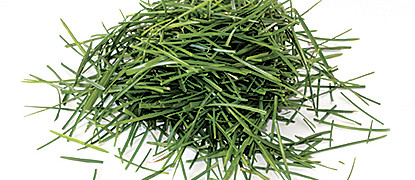Lawn Care Tip: Protecting your lawn from dogs

With all the running, jumping and going to the bathroom, dogs can do quite a number on your lawn. There are some products you can purchase that promise to eliminate urine spots from your lawn, but this might be more trouble than it’s worth to have to try and seek out every spot and treat it thoroughly. There is also the issue with trampled or worn grass, and unless you’re ready to dig up your existing turf and plant sturdier grass, you will need another option for protecting your turf from your pet’s paws.
Tree care specialists recommend planting clover in the areas where your dog likes to frequent for his bathroom needs. Dogs often retreat to a certain spot time after time, so planting clover in this area will allow him the comfort of thinking he’s getting grass, but his urine will not have the same effects on the clover as it does on grass. The nitrogen and salt in urine is what causes the grass to become discolored, but clover is resistant to these chemicals and will remain green. Clover is also beneficial because it doesn’t require the same amount of upkeep and watering as regular grass.
Another tree care tip for the wearing of your turf is installing a pooch path. As stated before, dogs are creatures of habit and tend to pick out the area around your fence as their potty spots. Tree care professionals advise against growing grass in this area and instead suggest installing a crushed gravel path or a stone walkway. This will also work for your dog’s other paths through the yard. Instead of having trampled grass, you will have a creative and luxurious-looking pathway that will add character to your lawn and landscape.
If you don’t feel like dealing with the hassle of keeping up with your dog’s potty spots, contact us and ask about how to combat the effects your pet may have on your lawn.



